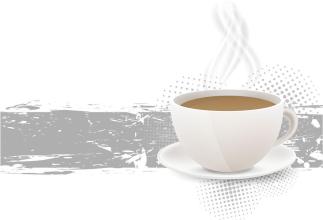The smell is very rich Colombian coffee flavor taste manor features boutique coffee introduction hope
Most of the museums of the world-famous Smithsonian Museum (Smithsonian Museum) are located in downtown Washington. Museums under the Smithsonian Museum include Arthur M. Sackler gallery, Hershhorn Museum and Sculpture Garden, National Air and Space Museum, National Museum of American History, National Museum of Native Americans, National Museum of Natural History, National Portrait Museum, National Postal Museum, Museum of American Art, Smithsonian National Zoological Park, etc. The National Zoo is one of the few cities in the United States that has an exhibition of giant pandas. The Smithsonian Museum also has a number of exhibitions and research institutions in Maryland and Virginia. Among them, Freer gallery and Sackler gallery (Freer and Sackler Galleries) mainly collect Asian art, which is also a Chinese pavilion.
The National Gallery of the United States is affiliated to the Smithsonian Museum, but operates independently. The Library of Congress and the National Archives are also important museum-type institutions. The National Archives contains the original Declaration of Independence and the Constitution of the United States.
Many museums in the SAR are open to the public free of charge. Among them, the Space Museum is the most popular. [5]
Newspaper
The Washington Post is the most important newspaper in the Washington area and one of the most influential daily newspapers in the United States. The daily Washington Times and the weekly Washington City newspaper also have a large readership. In 2005, the Magazine, a newspaper for outskirts of the city, was reorganized into the Washington Inspector. The weekly release of Washington Blade focuses on homosexuality. Washington Insider focuses on African-American readers. The Greater Washington Branch of Sing Tao Daily, the world's largest Chinese newspaper, is located in Rockville, near Maryland (Rockville).
The suitable climate in Colombia provides a real "natural pasture" for coffee. Coffee trees in Colombia are mainly cultivated in the Andes, on steep slopes about 1300 meters above sea level, where the annual temperature is about 18 degrees Celsius, annual rainfall is 2000 to 3000 millimeters, latitude 1 °- 11 °15 north, longitude 72 °- 78 °west, the specific range of elevation is more than 2.000 meters. A special combination of factors, latitude, altitude, soil, plant origin of species and varieties of coffee production in Colombia's coffee growing area, rain patterns produced by the climate of the coffee growing area and tropical convergence, changing topography, luminosity, favorable temperature range throughout the year, moderation and Rain Water's distribution And include some common cultural practice areas in the process of selective logging and transformation, including washing and drying. Very suitable for the growth of coffee, mild climate, humid air, and can be harvested regardless of season. This is why Colombian coffee is of high quality. Colombia has three Codiera mountains running north and south, right into the Andes. Coffee is grown along the highlands of these mountains. The mountain steps provide a diverse climate, where the whole year is the harvest season, and different kinds of coffee ripen at different times. And fortunately, unlike Brazil, Colombia doesn't have to worry about frost. Approximately 2.7 billion coffee trees have been documented in Colombia, 66 per cent of which are grown in modern plantations, while the remaining Colombian coffee grown on traditionally small farms is mainly Arabian coffee (coffea arabica), that is, small fruit coffee (small grain coffee), while large fruit coffee (coffea robusta) is mostly grown in Africa of origin, such as the famous Malagasy coffee. There are several varieties of small fruit coffee. Brazilian coffee, which has the largest yield in the world, has larger seeds, stronger adaptability and high fruit yield; by contrast, the mild coffee produced in Colombia is a more high-quality variety, which is related to its special geographical location and climatic environment. [1]
Colombian coffee is divided into more than 200 grades, the regional coffee is very strong. Columbia beans take the SUPERMO as the highest grade, followed by the EXCELSO, but only selected coffee of more than 18 beans (18cm 64 inches in diameter) can be included in the selection. Colombian coffee has a balanced flavor and a smooth taste, just like a gentleman in coffee. It has a wide range of producing areas, but the coffee in the central mountain area is the best and has a thick texture. The most famous producing areas are medellin, armenia and manizales, which are commonly referred to as "mam". Yes, "Na Linglong Coffee" (narino) is delicious and of good quality. It is said that starbucks, which aims to sell selected coffee, has the exclusive right to buy "narino supermo" coffee beans, which are common in their chain stores.

Important Notice :
前街咖啡 FrontStreet Coffee has moved to new addredd:
FrontStreet Coffee Address: 315,Donghua East Road,GuangZhou
Tel:020 38364473
- Prev

General smooth taste of Columbia Hope Manor Coffee Flavor: an introduction to the characteristics of the producing area
The land of the District of Columbia [2] originally came from Maryland and Virginia. When the District of Columbia was founded, the north bank of the Potomac River included Georgetown (Georgetown,D.C.), Washington City (Washington City,D.C.) and Washington County (Washington County,D.C.). In 1878, the three places merged into Washington, D.C., and the city of Washington.
- Next

Introduction to the characteristics of coffee flavor and taste in Nicaragua's Tianji Manor, which is very aromatic and mellow.
Columbus arrived here in 1502 and reached the east coast of Nicaragua. In 1522, Spanish colonists began to conquer the region. The cities of Granada and Leon were founded in 1524. From then on, Nicaragua became a Spanish colony and came under the jurisdiction of the Governor's Office of Guatemala. The city of Leon developed into a political and cultural center; Granada became a commercial and agricultural center. In the later period of colonial rule
Related
- Does Rose Summer choose Blue, Green or Red? Detailed explanation of Rose Summer Coffee plots and Classification in Panamanian Jade Manor
- What is the difference between the origin, producing area, processing plant, cooperative and manor of coffee beans?
- How fine does the espresso powder fit? how to grind the espresso?
- Sca coffee roasting degree color card coffee roasting degree 8 roasting color values what do you mean?
- The practice of lattes: how to make lattes at home
- Introduction to Indonesian Fine Coffee beans-- Java Coffee producing area of Indonesian Arabica Coffee
- How much will the flavor of light and medium roasted rose summer be expressed? What baking level is rose summer suitable for?
- Introduction to the characteristics of washing, sun-drying or wet-planing coffee commonly used in Mantenin, Indonesia
- Price characteristics of Arabica Coffee Bean Starbucks introduction to Manning Coffee Bean Taste producing area Variety Manor
- What is the authentic Yega flavor? What are the flavor characteristics of the really excellent Yejasuffi coffee beans?

